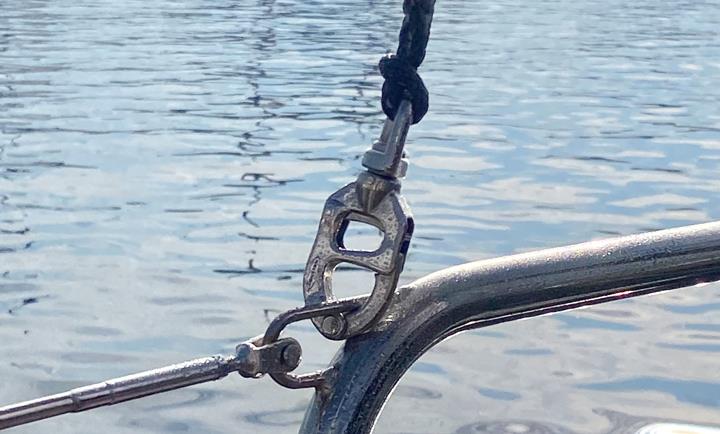
Ronstan snap shackles - A more affordable alternative to a sailing staple?
by Aleix Escorsell 2 Mar 2022 17:00 GMT

Triggersnap shackles © Ronstan
Hailing from Australia, Ronstan have been developing hardware for sailors since 1953. The Triggersnap™ shackles are the latest shackle range in their extensive catalogue of deck hardware solutions and Ronstan's own take on snap shackles.
Snap shackles are a familiar sight to many sailors as a quick and reliable means of connecting halyards/sheets to sails instead of more conventional pin shackles or knots. They are great for quick jib halyard swaps and safely releasing the spinnaker guy when under load, or any other application where you may want to trip quickly under load!
Ronstan's version, the Triggersnap™ shackle is a compact little snap shackle, made from heat-treated, investment cast 15.5PH stainless steel with a high strength to weight ratio.
The shackle is designed to be reinforced and secure, but can easily be released with one hand, or using a Triggersnap™ release spike if needed.
If this recent addition to the Ronstan range seems familiar to you, then you are not mistaken!
The Ronstan Triggersnap™ shackle is incredibly similar to the Tylaska snap shackle, an internationally renowned shackle and a staple in high performance sailing and racing circles that has been in existence since the 1980s.
So how does the Ronstan Triggersnap™ shackle compare to the Tylaska snap shackle?
| Shackle | SWL (kg) | NBL (kg) | Weight (g) |
|---|
| Ronstan Triggersnap 80 | 1000 | 2000 | 60 |
| Tylaska T5S | 1136 | 2272 | 59 |
| Ronstan Triggersnap 94 | 1600 | 3200 | 106 |
| Tylaska T8S | 1818 | 3636 | 97 |
| Ronstan Triggersnap 111 | 2400 | 4800 | 170 |
| Tylaska T12S | 2727 | 5454 | 159 |
All Ronstan Triggersnap™ shackles come with either a small or large bail, but unlike the Tylaska snap shackles, have no option for clevis bail or linked peel attachment - yet!
The Tylaska snap shackle is made of a heat treated 17-4PH stainless steel, a type of steel that contains slightly more Chromium than the trigger shackle's 15.5PH stainless steel. The Tylaska snap shackle is generally lighter but stronger than the Ronstan Triggersnap™ shackle, but this extra performance comes at a price. The Triggersnap™ comes out an average of 15% cheaper than the equivalent Tylaska shackle.
This makes the Triggersnap™ shackle a great "value choice" for sailors of smaller sportsboats such as J-24s and Mumm 30s etc. However, the current Ronstan Triggersnap™ range is quite limited, so for sailors looking for a Safe Working Load (SWL) above 2400 kg, they will have to look elsewhere.
That said, most sailors outside of high-performance circles should find the Ronstan Triggersnap™ shackle an affordable and still very reliable alternative.
If you have any questions about Ronstan Triggersnap™ shackles, don't hesitate to email us at or see our range of Triggersnap Shackles.